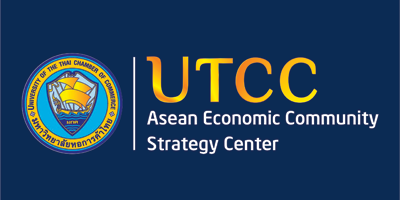India-Asean engagement deepening in 2017
India is preparing to help celebrate 25 years of relations with Asean in style with a plethora of meetings, summits, fashion shows, IT events and business fairs in the country and abroad throughout this year.
It began in February this year with the Indian Telecom Equipment and Services Export Promotion Council (TEPC) hosting telecom representatives of India, Asean, Bangladesh and Bhutan in New Delhi. Indian Prime Minister Narendra Modi announced a UScopy-billion credit line to Asean in November 2015 for digital and physical connectivity, by utilising Indian expertise, services and products.
Earlier this month, Indian Vice President Hamid Ansari visited Jakarta for the two-day summit of the Indian Ocean Rim Association (IORA) on maritime cooperation. The 21- member body includes Indonesia, Malaysia and Thailand. Next month, Delhi will be stage a four-day India-Asean summit featuring talks on Mekong-Ganga Cooperation and other issues of mutual interest. An India-Asean youth summit will be part of the event.
On May 24 and 25, the Asean-India Business Council will hold a Biztec conference and exhibition in Kuala Lumpur. The event is expected to bring together major Indian and Asean ICT players and biopharma companies. This will be followed by eighth edition of the Delhi Dialogue, an annual conference where political and economic leaders, officials, academics and opinion-makers discuss how to broaden political, strategic, economic and civil society interaction.
New Delhi also hopes to hold a car and bike rally from a destination in Asean this year. As well, Indian ships will be making calls at all major Asean ports. This year’s textile expo in Gujarat will also have Asean as its theme. In April alone, Vietnamese Foreign Minister Pham Binh Minh and Malaysian Prime Minister Najib Razak are expected in New Delhi.
Mr Minh’s visit will be very significant as India and Vietnam are deepening their defence engagement. Currently, India is training Vietnamese soldiers at the army’s Jungle Warfare School in the northeast of the country. Delhi also hopes to sell its Brahmos supersonic anti-ship missile and Akash surface-to-air missile Akash to Hanoi.
Still being worked out are details of an Asean-India summit that will take place before Jan 27 next year when the commemorative year ends. New Delhi has already contacted nine of the 10 Asean members through visits by Mr Modi, Mr Ansari and President Pranab Mukherjee.
Mr Modi and Foreign Minister Sushma Swaraj will be visiting the Philippines later this year for the India-Asean and East Asia summits and the Asean Regional Forum. These will be organised in August and November. In August, Thailand will hold an Asean-India business fair in Bangkok. This year, India will also be holding its first regional Pravasi Bharatiya Divas (a meeting of overseas Indians in Asean) in Singapore.
Asean, home to 630 million people, is the third-largest market in the world, behind only China and India. Its US$2.89-trillion economy is a major attraction for India.
India has a free trade agreement (FTA) with Asean for goods. New Delhi also has signed an FTA for services with eight Asean members and an investment FTA with seven members.
Indonesia and Cambodia have yet to ratify the services and investment pacts. Laos has ratified only the services portion. The agreements came into effect from July 1, 2015 after six Asean members ratified them.
In Asean, India obtains the most investment from Singapore, totalling around $75 billion from 2007-16. Indonesia is India’s largest partner in Asean for goods trade.
India has proposed what it believes are attractive duty cuts on imports from Asean under the RCEP (Regional Comprehensive Economic Partnership) trade agreement.
However, Asean is pressing for the complete elimination of tariffs, something Delhi is resisting because it is loath to lose the revenue.
The next round of the RCEP negotiations is scheduled for the Philippines in April, followed by a ministerial meeting in May. Apart from the 10 Asean members and India, the other participants in the RCEP are Australia, China, Japan, South Korea and New Zealand.
Besides increasing trade and strategic alliances with Asean, India is strengthening cultural connections with the community. The two sides are exchanging visits by students, farmers, diplomats, media members and others. Scholars, meanwhile, are mapping Indian inscriptions along the Mekong River. In Indonesia, India has commissioned a textile museum. As well, the Modi government plans to upgrade its New Delhi-based Asean-India Centre into a site of international repute.
The two sides are also inching toward signing a maritime agreement. However, an air services agreement is less likely because India’s civil aviation ministry believes Indian airlines are not in a position to compete with their peers from the Asean countries. The proposed trilateral Motor Vehicles Agreement (MVA) between India, Thailand and Myanmar, meanwhile, has been on hold since 2015. The trilateral highway, which would connect India to Myanmar, Thailand and other Asean countries, is scheduled to be completed in 2019.
India believes its northeastern region will benefit economically as the gateway for connecting with Asean.
Apart from celebrating 25 years of its relationship with Asean, India is also commemorating 15 years of summit-level dialogues with the Asean members and five years of strategic partnership.
India has reiterated its support for Asean countries on freedom of navigation in the South China Sea, where four members have disputes with China. Such support comes at a cost, to Delhi’s consternation. Beijing has retaliated in the UN Security Council by holding up India’s entry into the Nuclear Suppliers Group (NSG) and by opposing a ban on Pakistan-based terrorist Maulana Masood Azhar.
For its part, Delhi continues to oppose the China Pakistan Economic Corridor (CPEC) because it will pass through Pakistan-occupied Kashmir which India claims.
Source: http://www.bangkokpost.com/business/news/1221982/india-asean-engagement-deepening-in-2017


 English
English




